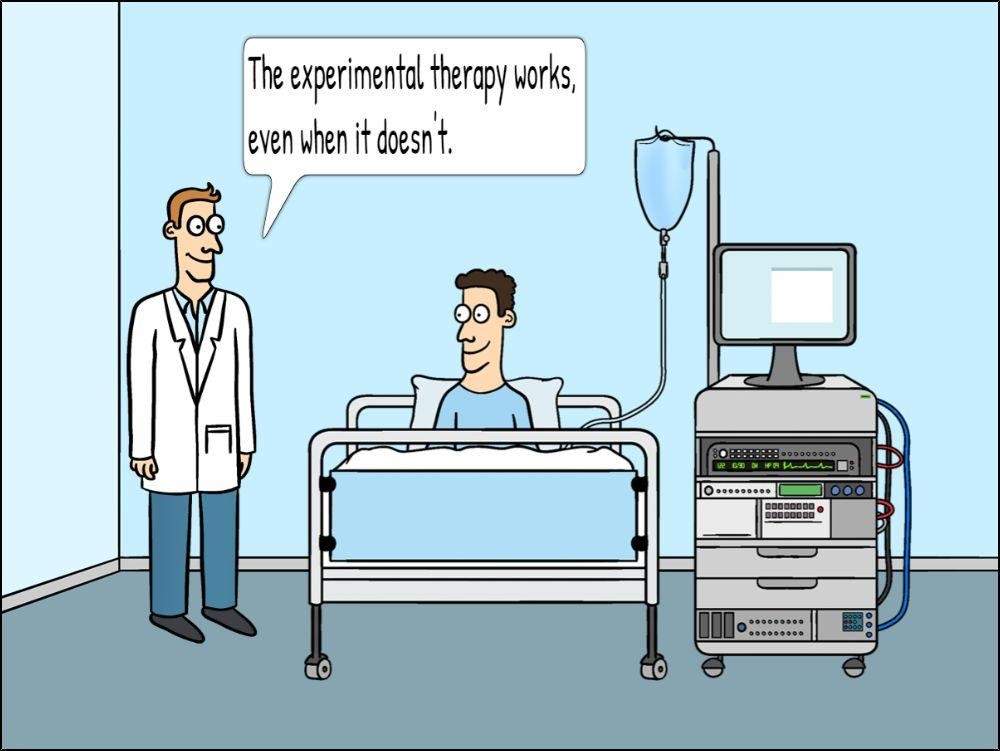Blog entry written on: Effect of spin in the abstract of a randomised controlled trial on physiotherapists’ perception of treatment benefit: a randomised controlled trial (bmjebm-2021-111714).
Authors: Heppy Khanpara, V Prakash
Researchers are passionate about the research they conduct. A lot of time, effort and money is spent developing and testing an experimental intervention. Results of research have significant repercussions on their career development, funding opportunities and professional reputation. When clinical trial results suggest experimental therapy might be ineffective in improving patient outcomes or even cause harm, it may lead them to present their findings in favour of experimental therapy, potentially misleading the readers. Adding a spin to results of a clinical trial deliberately or not, presents a distorted picture of results.
Source: created by study authors.
Abstracts provide opportunity for a quick evaluation of the results of trials. Many readers only read the abstract of a randomized clinical trial (RCT) to determine the value of the experimental intervention tested in the trial. What might be the effect of an over-hyped, inaccurate or false interpretation of study results reported in the abstract of RCT on clinicians’ perception of benefit of the experimental intervention? We addressed this question by conducting a randomized controlled trial among physiotherapists working in clinical settings.
We conducted a two-arm parallel group RCT to examine physiotherapists’ interpretation of results of an abstract presented with or without spin (bmjebm-2021-111714.R1). We selected an abstract of an RCT with statistically non-significant differences in the primary outcome reported with spin in the conclusion. We used two versions of the abstract of the same article: (1) abstract with spin (original version) and (2) abstract without spin (rewritten version). We randomly assigned physiotherapists to read one version of the selected abstract, with or without spin. A set of questions designed to test participants’ interpretation of the results of the abstract and their overall impression of the study in terms of its importance and methodological rigour followed each abstract.
Our study findings showed that most physiotherapists’ who read the abstract in its original form couldn’t spot the spin. Although no significant difference (statistically and clinically) was demonstrated between experimental and control group interventions physiotherapists reported higher levels of confidence in the benefit of experimental treatment. Removing spin from the abstract had lowered their confidence in experimental treatment. However, there was only a moderate difference in the confidence level between physiotherapists who read abstract with and without spin. Possible explanations for clinicians favouring experimental treatment despite results showing no benefit over control treatment might be clinician’s optimism bias—unwarranted belief in the efficacy of new therapies, poor health numeracy and lack of critical reading skill.
Abstracts of RCTs should be free from spin. But who’s responsibility it is and how can we minimize effects of spin on readers perception of study results? Ideally, authors should recognize their responsibility to accurately represent the meaning of their study results and clearly conclude whether experimental treatment was more beneficial than control treatment. If they fail in their responsibility, journal editors and reviewers should act as gate keepers in spotting spin and ensure that conclusions are not misinterpreted. Clinicians and other users of biomedical literature too should not blindly rely on authors’ conclusion for interpreting study results especially when the results are statistically non-significant or when a study reports efficacy of a new therapy.
To paraphrase Professor Douglas Altman, to maximize the benefit to society, you need not just do research but report the researchers in the most straightforward and accurate way especially when study results doesn’t support researchers’ hypothesis.
Author
Dr Prakash V MPT PhD
Associate Professor
Ashok & Rita Patel Institute of Physiotherapy
Charotar University of Science and Technology
Anand, Gujarat, INDIA.

Conflict of interest disclosures: None.
DISCLAIMER
The views and opinions expressed on this site are solely those of the original authors. They do not necessarily represent the views of the BMJ and should not be used to replace medical advice. All information on this blog is for general information, is not peer-reviewed, requires checking with original sources and should not be used to make any decisions about healthcare. No responsibility for its accuracy and correctness is assumed by us, and we disclaim all liability and responsibility arising from any reliance placed on such commentary or content by any user or visitor to the Website, or by anyone who may be informed of any of its content. Any reliance you place on the material posted on this site is therefore strictly at your own risk.
